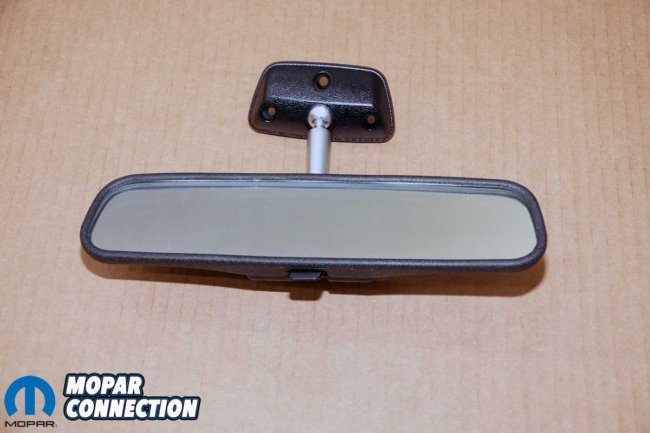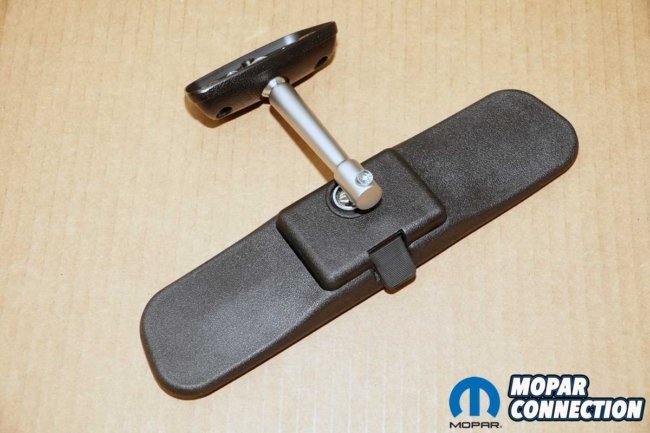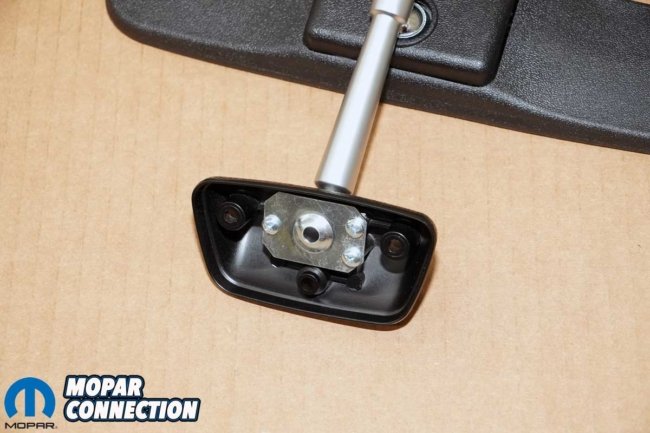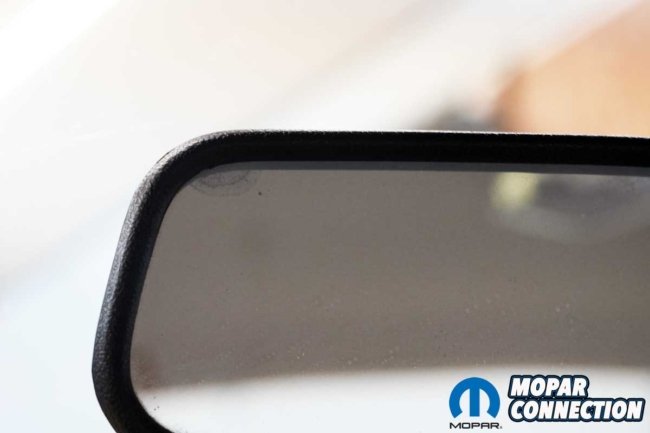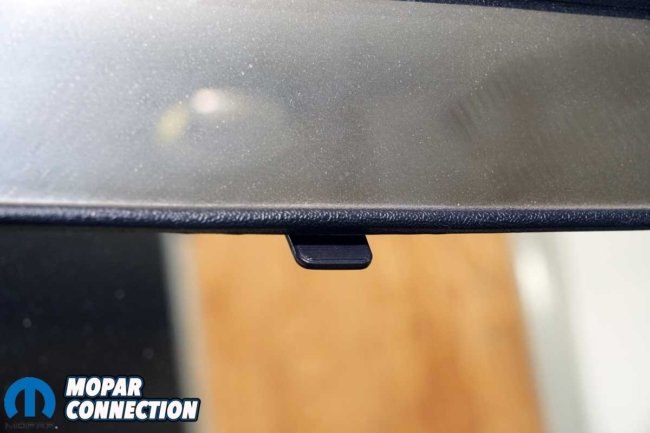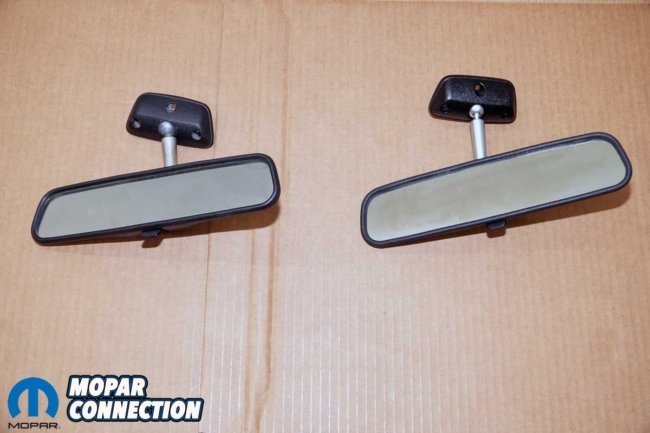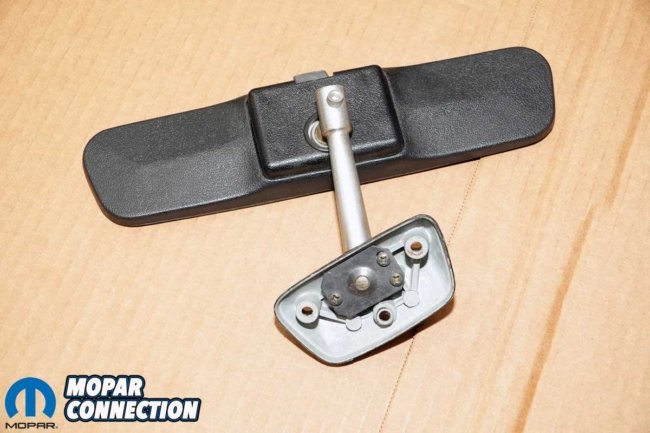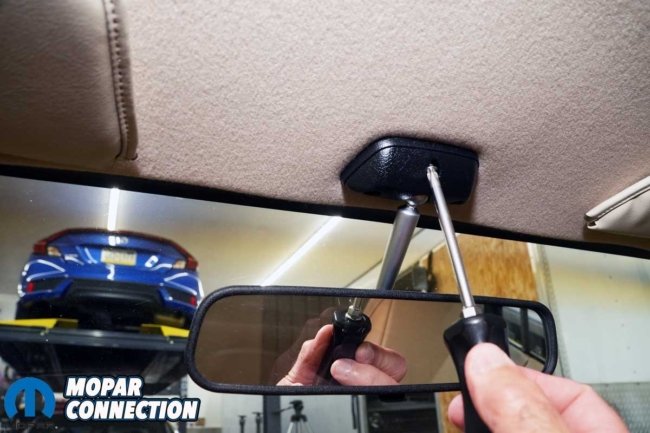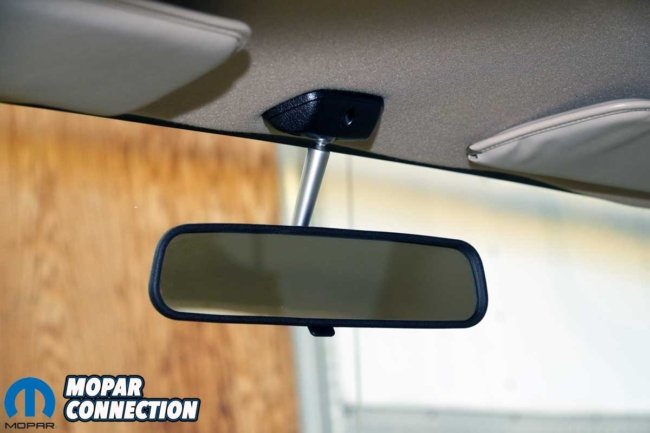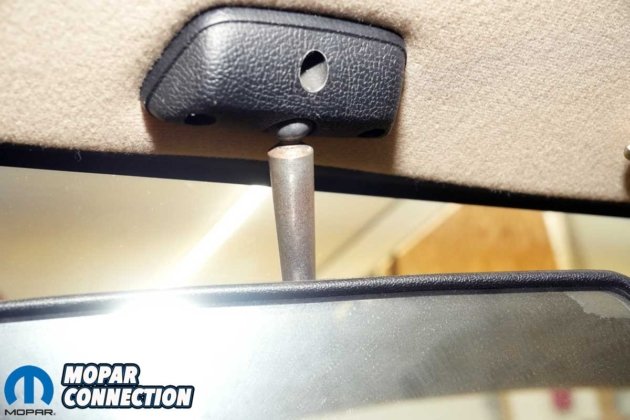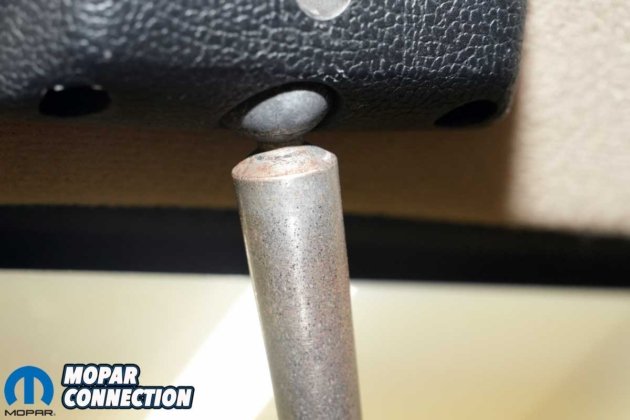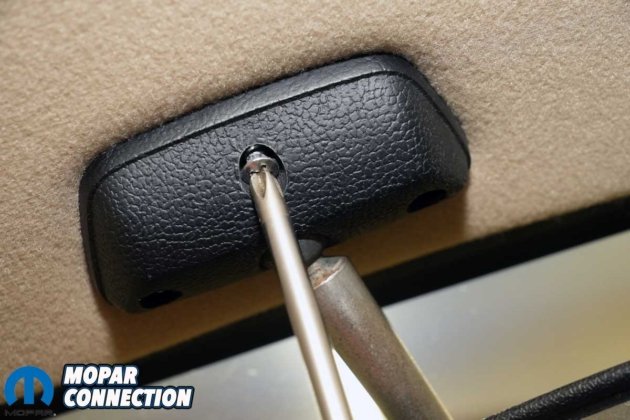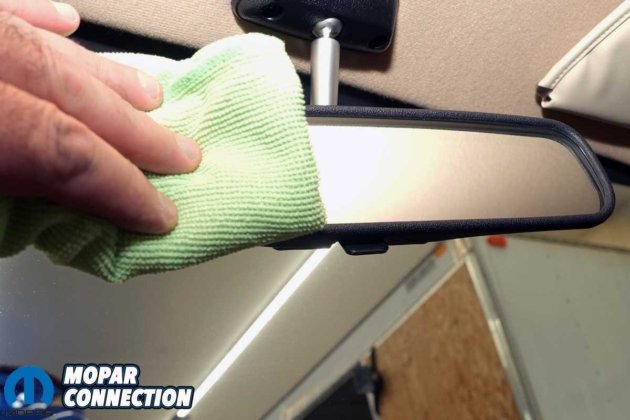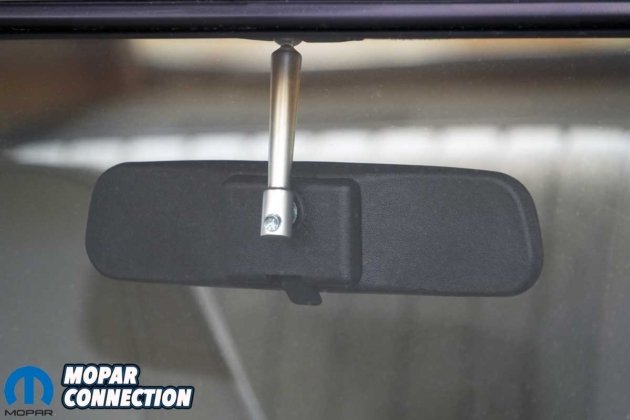
When we restored our ’75 Dart Swinger in 2009, we did our best to reuse original parts or find new-old-stock (NOS) parts. Sometimes, reusing less-than-perfect original parts was required. The interior rear-view mirror had begun to delaminate (de-silver), but no aftermarket factory-appearing mirror was available then, so we reused the original. Mancini Racing began offering a mirror (part no. MRECHZMRRRV4) for the Dart a couple of years ago, so we finally pulled the trigger and picked one up.
Above Left: The new mirror from Mancini Racing was a beautiful copy of the factory unit. Above Center: The mirror has the correct day/night tab on the underside. Above Right: The friction plate in the base of the mirror is identical to the original mirror.
Did you know there are many cases when automobile racing has driven innovation? The extreme racing conditions push the limits of technology, and there is a constant quest for increased engine efficiency, better brakes, advanced tire compounds and designs, and aerodynamics.
Racing has affected every part of the car, including engine design, driver restraint systems, fuel technology, transmission efficiency, suspension geometry, brakes, etc. Strangely, the rear-view mirror gained its popularity as a byproduct of racing.
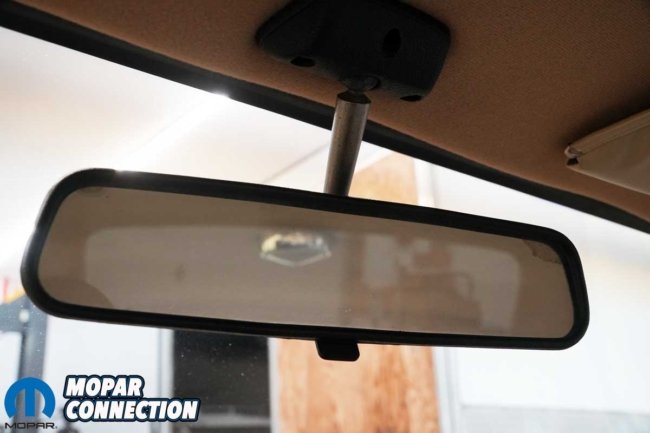
Above: We had to reuse the factory mirror during our restoration of the Dart in 2009. The mirror was functional, but it did not have the best appearance. At the time of the restoration, an aftermarket mirror was not available, and we were unable to find a new-old-stock (NOS) mirror.
The rear-view mirror was introduced in the early 1900s, but an engineer and race car driver, Ray Harroun, is recognized, or at least is the most famous, for installing a rear-view mirror on a car. Harroun used a simple mirror mounted on the dashboard of his Marmon Wasp during the 1911 Indianapolis 500, which he won.
At the time, most race cars had a second person (a “riding mechanic”) to watch for vehicles behind. Harroun’s idea to use a mirror to monitor the rear allowed him to race solo, reducing weight and improving aerodynamics.
Above Left: The original mirror had begun to delaminate in the top right corner. It was present during our restoration, but it had grown larger over the last decade and a half. Above Right: During the previous five years, the other top corner of the mirror has begun to delaminate. The mirror was still functional, but its breakdown would continue and eventually become a significant problem.
While Harroun’s use in racing was innovative, the rear-view mirror’s commercial adoption occurred gradually. Elmer Berger patented one in 1921, and it was marketed as a “cop-spotter,” further increasing its popularity.
The first Mopar-branded vehicles (from Chrysler, Dodge, DeSoto, and Plymouth) began appearing in the mid to late 1920s, and rear-view mirrors became more common in this era. The first Mopar car confirmed to have an optional mirror from the factory was the 1924 Chrysler Model B-70.
Above Left: The metal post on the original mirror had rusted before our ownership (2008). We cleaned it with a Scotch Brite pad, but it was pitted, and the rust color remained. Above Center: The mirror usually stayed oriented correctly to the position we desired, but at times, the ball would rotate in the base. At certain angles, the ball did not have enough pressure on it. Therefore, it would move slightly. Above Right: The day/night tab still functioned properly, but when we used it (with a pushing motion), the ball in the base would also move, and the mirror would not return to its original position when we pulled the tab back.
By the 1930s, rear-view mirrors had become a common standard feature on many passenger vehicles. Thirty years later, the National Motor Vehicle Safety Act of 1966 increased safety standards, including mirrors as standard equipment.
Manual tilt day/night mirrors started appearing and became standard equipment on many passenger cars and trucks by the early 1970s. Also, in the 1970s, passenger-side mirrors became more common, though they were still optional on some vehicles throughout the decade.
Above Left: Three screws retain the mirror base to the roof of the Dart. Above Right: After unthreading the screws, we removed the base from the headliner.
Federal Motor Vehicle Safety Standard (FMVSS) No. 111, “Rear Visibility,” was enacted in 1976 and addressed requirements for rear-view mirrors, including:
• Inside rear-view mirror: This standard required an inside rear-view mirror that provided a specific field of view.
• Driver’s side outside side mirror: A driver’s side outside side mirror was required on all passenger cars.
• Passenger’s side outside side mirror: A passenger’s side outside side mirror was required if the inside rear-view mirror did not meet the field of view requirements.
Above Left: The mirrors are identical, just 50 years apart in age. The original unit (left) had faded plastic and delaminated of the glass. Above Right: The friction plate was as tight as it could be, but the ball still moved slightly. We could have taken the plate off, flattened the contour where the ball fits, and reassembled it, but with the other problems with the mirror, it was a better option to get a new Mancini Racing mirror.
On May 1, 2018, additional government regulations led to the implementation of a new rule concerning rear visibility systems. It required all passenger cars, SUVs, trucks, and vans to have rear-view visibility systems (typically rear-view cameras) to provide drivers with a view of the area behind the vehicle.
Above Left: The three factory screws were rethreaded into the steel reinforcement under the headliner. Above Right: We adjusted the mirror, and once positioned, we cleaned the reflective surface.
Now back to our Dart. We found installing the new mirror the easiest Saturday morning tech we had ever done. To remove the old mirror, we unthreaded three screws.
We set the mirror aside, and we attached the new Mancini rear-view mirror to the factory location using the same three screws. After a final adjustment, we completed the job. The day/night mirror looked correct and operated flawlessly.
Above: The Mancini Racing rear-view mirror was identical to the factory mirror, except without the delamination spots.
For more information about the mirror we selected, or the countless other mirrors (rear-view and side mirrors) offered, check out Mancini Racing online for its entire product line.



